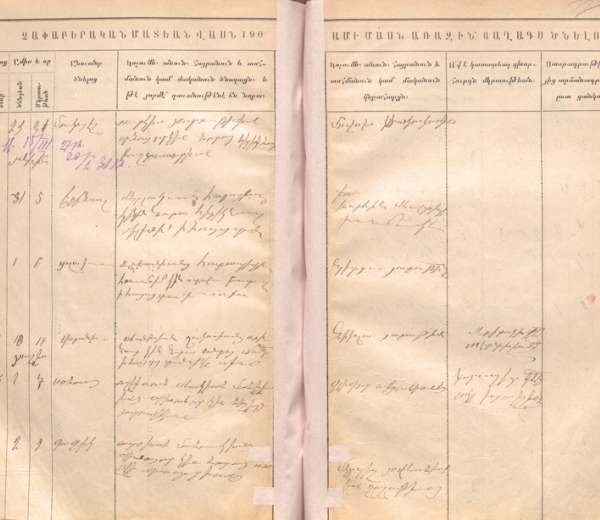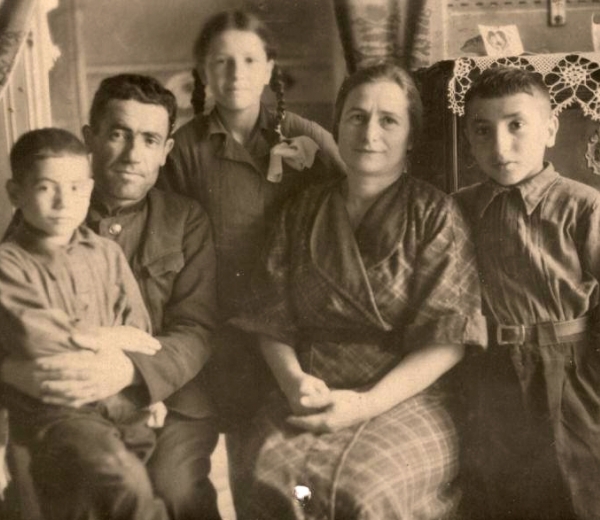|
Genocide survivor Anzhela Oltetsyan with her husband and children
|
Although the Oltetsyan sisters sent inquiries in search of Anzhela, the fear and secrecy of the Soviet years prevented them from finding her.
Tigran Hamasyan doesn’t know much about the history of his ancestors who survived the Genocide. “My grandmother says that my great grandmother Hripsime would sing ‘Krounk’ and cry when she was alone; she would never take the black scarf off her head. My other grandmother, Anzhela, would never know that her sisters kept searching for her.”
Tigran’s recently released album “Tsaghrarmat” (“Mockroot”) differs from his previous works as it embraces much of his own history. “Yasaman” (“Lilac”) is about a tree in the yard of his childhood home; “Song for Melan and Rafik” is dedicated to his grandmother and grandfather; “Kars 1” and “Kars 2 Wounds of the Centuries” is about his maternal grandparents’ ancestral home.
This is my attempt to look into myself, to get to know myself, to comprehend my roots. We have to be close to nature – try to understand ourselves, our essence – for nature always wins over human complexity. This album is a kind of longing and nostalgia for a human nature that’s more spiritual, more loving, more together with its roots. It encompasses a sort of sacrifice within itself, a sacrifice for the sake of human inspiration,” says the 28-year-old master of folklore improvisations.
Tigran and the Yerevan State Chamber Choir, led by Harutyun Topikyan, joined forces to present 100 concerts dedicated to the Centennial of the Armenian Genocide. Titled “Luys i Luso,” the concerts give new interpretations to spiritual music from the 5th to the 19th centuries. The performances, which began in Yerevan on March 24, 2015, toured Europe, the United States, Russia and Turkey.





